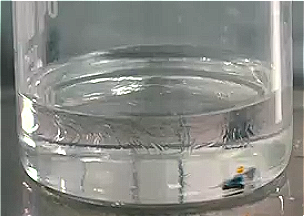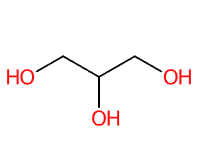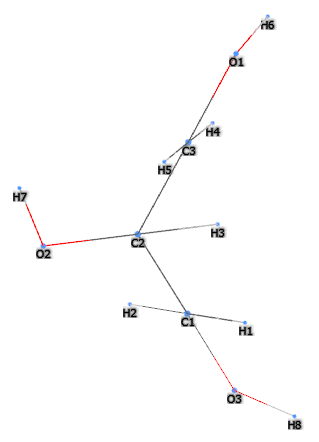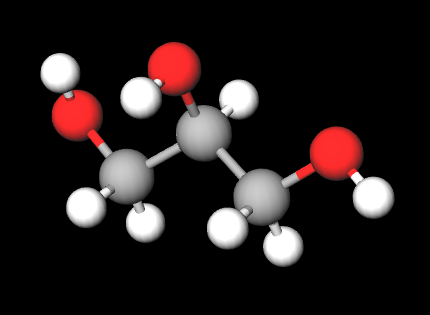Check the ingredients!
... live healthy!


| "Descrizione" by Whiz35 (11828 pt) | 2023-Oct-10 10:56 |
Vegetable glycerin
Glycerin (Glycerine). Trivalent alcohol, hygroscopic. Glycerin is the trade name when the percentage of glycerol is 95%, but the names Glycerin and Glycerol are mostly used to identify the same product. In practice: the pure chemical component is called glycerol, while glycerine contains about 95% glycerol.
Raw materials used in production.
Glycerin can be produced from various lipids (in this case fats and oils), and it is also obtained as a byproduct in the production of biodiesel and soap.
Step-by-step summary of industrial production process.
It occurs as an odourless, colourless to brown viscous liquid. Insoluble in chloroform, ether, carbon disulphide, benzene, oil. Miscible with ethanol and water. Can absorb moisture from the air as well as other volatile chemicals such as hydrogen sulphide, hydrogen cyanide and sulphur dioxide.

What it is used for and where it is used
There are approximately 1,600 applications for glycerol.
Food
Hygroscopic agent, emulsifier, sweetener and solvent.
Military
Preparation of nitroglycerine, an explosive. Anticorrosive agent
Pharmaceutical
Syrups, suppository ointments as humectant, lubricant. Inserted in medicinal tablets as a humectant and flow agent.
Cosmetics
Its water solubility, hygroscopicity and hydrophilicity characteristics give glycerine humectant and moisturising capacities that are of great importance in most topical cosmetic applications. It attracts water to the surface of the skin and in this way maintains the hydration of the stratum corneum. By improving skin texture, it acts as a skin barrier. In cleansers, shampoos and other cosmetic products, it is included in the formula with the aim of moisturising and softening the skin, preserving it from ageing or roughness. It is also used in toothpastes as a humectant and to protect gum and tooth tissue.
Classic glycerine acts in cosmetic formulations in a number of useful ways, which I list in alphabetical order.
Denaturant. The ionic or polar molecules of this ingredient included in formulations that interact with protein groups, modulate the properties of the solution to suit specific needs.
Hair conditioning agent. A large number of ingredients with specific purposes can co-exist in a hair shampoo: cleansers, conditioners, thickeners, mattifying agents, sequestering agents, fragrances, preservatives, special additives. However, the indispensable ingredients are the cleansers and conditioners as they are necessary and sufficient for hair cleansing and manageability. The others act as commercial and non-essential auxiliaries such as: appearance, fragrance, colouring, etc. Hair conditioning agents have the task of increasing shine, manageability and volume, and reducing static electricity, especially after treatments such as colouring, ironing, waving, drying and brushing. They are, in practice, dispersing agents that may contain cationic surfactants, thickeners, emollients, polymers. The typology of hair conditioners includes: intensive conditioners, instant conditioners, thickening conditioners, drying conditioners.
Humectant. Hygroscopic compound used to minimise water loss in the skin and to prevent it from drying out by facilitating faster and greater absorption of water into the stratum corneum of the epidermis. The epidermis is the most superficial of the three layers that make up human skin (epidermis, dermis and hypodermis) and is the layer that maintains hydration in all three layers. In turn, the epidermis is composed of five layers: horny, the most superficial, granular, spinous, shiny, and basal. Humectants have the ability to retain the water they attract from the air in the stratum corneum and have the function of moisturising the skin. They are best used before emollients, which are oil-based.
Oral care agent. This ingredient can be placed in the oral cavity to improve and/or maintain oral hygiene and health, to prevent or improve a disorder of the teeth, gums, mucous membrane.
Fragrance. It plays a very important role in the formulation of cosmetic products as it allows perfume to be enhanced, masked or added to the final product, improving its commercial viability. The consumer always expects to find a pleasant scent in a cosmetic product.
Skin conditioning agent. It is the mainstay of topical skin treatment by restoring, increasing or improving skin tolerance to external factors, including melanocyte tolerance. The most important function of the conditioning agent is to prevent skin dehydration, but the subject is rather complex and involves emollients and humectants.
Skin protectant. It creates a protective barrier on the skin to defend it from harmful substances, irritants, allergens, pathogens that can cause various inflammatory conditions. These products can also improve the natural skin barrier and in most cases more than one is needed to achieve an effective result.
Solvent. It is the substance for dissolving or dispersing surfactants, oils, dyes, flavourings, bactericidal preservatives in solution.
Viscosity control agent. It controls and adapts viscosity to the required level for optimal chemical and physical stability of the product and dosage in gels, suspensions, emulsions, solutions.
Textile industry
Finishing techniques, co-solvent, dispersant, moisture absorbent. Wetting agent, hygroscopic agent, anti-shrinkage treatment of fabrics.
Coatings
Alkyd resin (modified thermosetting polyester), polyester resin, epoxy resin and glycidyl ether. and also: papermaking, in leather, photography, metalworking, rubber, printing and dyeing, antifreeze in lubricants and the petroleum sector
For more information:
Typical optimal commercial product characteristics Glycerol
| Appearance | Colorless to brown colored liquid |
| Boiling Point | 290.0±0.0 °C at 760 mmHg |
| Melting Point | 17.8℃(18.17℃,20℃) |
| Density | 1.3±0.1 g/cm3 1.26331 (20 ºC) |
| pH | 5.5-8 (25℃, 5M in H2O) |
| Flash Point | 160.0±0.0 °C |
| Relative vapor density (air = 1) | 3.1 |
| Viscosity (20 ºC) : 1412 mpa. S (25 ºC) | 945 mpa. S |
| Surface tension (20 ºC) | 63.3 mN/m |
| Saturated vapor pressure (kPa) | 0.4 (20 ºC) |
| Ignition temperature | 370° |
| Volume expansion coefficient/K - 1 | 0.000615 |
| Saponification equivalent | ≤5mg/kg |
| Heavy metals | ≤2mg/kg |
| Refractive Index | 1.47547~1.4730 |
 |  |
 |  |
Synonyms:
| Evaluate |